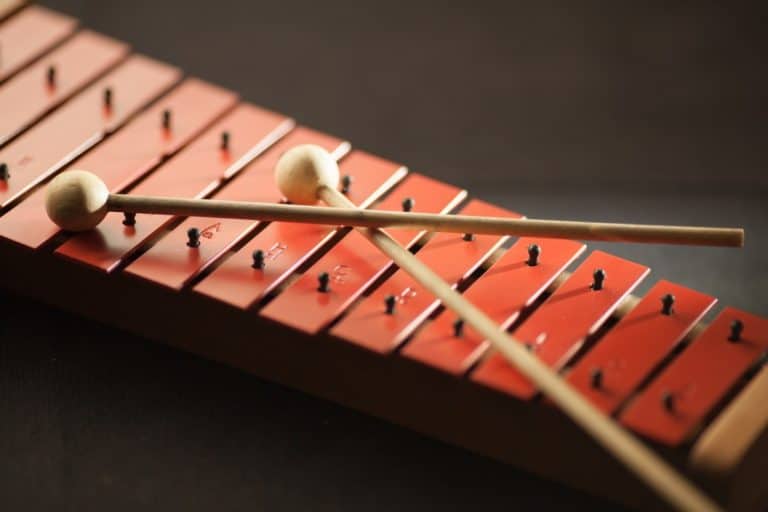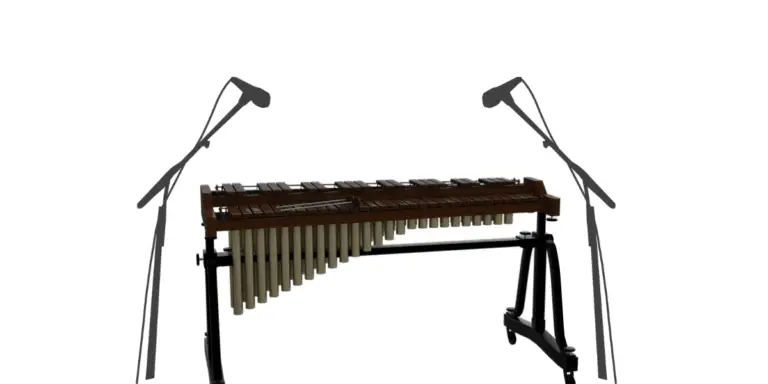Can You Make a Xylophone With Pencils?
A xylophone is a fun musical instrument to have around the house, and you can actually save money by making it with pencils. If you’re asking yourself, “How can you make a xylophone with pencils?” keep reading and I’ll explain.
Can you make a xylophone with pencils? Pencils can be used to make a working xylophone. It won’t necessarily have the same melodious sound as a real, wood and metal xylophone, but it will work just fine for home. You’ll only need half a dozen supplies including pencils of varying lengths to be able to play tunes in no time.
If you’re still wondering how you can go from a few pencils to a musical instrument, let me take you step by step in making a xylophone with pencils.
Supplies for Making a Xylophone With Pencils
The first thing you’ll need to do to make a xylophone with pencils is to collect your supplies. As I mentioned above, you’ll only need about half a dozen of them. Here is what you need to collect:
- Six pencils (brand new is best, at least 6.4 inches)
- Two more pencils with erasers
- Two-sided tape
- Shoebox lid
- Scissors
- Ruler
Building a Xylophone With Pencils
Once you’ve collected your supplies, you’re ready to get building. Follow these steps to put together your xylophone and start filling your home with music.
- Put your shoebox lid upside down, flat on the ground horizontally. This provides the base of your xylophone.
- Cut your pencils to the following lengths. Scissors should work, but you can use a knife, carefully, if needed.
- 6.4 inches (Plays C note)
- 5.8 inches (Plays D note)
- 5.7 inches (Plays E note)
- 5.6 inches (Plays F note)
- 5.3 inches (Plays G note)
- 5.1 inches (Plays A note)
You can label the pencils with a marker if you want so you know which one plays which note.
- Run two horizontal pieces of two-sided tape across the middle of your shoebox lid. There should be about four inches between the top piece and the bottom piece. It’s important to make sure the tape is as taut as possible.
- Place the pencils vertically on the two-sided tape from largest to smallest, so the 6.4-inch pencil should be first, followed by the 5.8-inch pencil and so on and so on.
- Tap the pencil xylophone with the metallic band of the two pencils with erasers to play music.
If you want more than one xylophone around the house and are running out of supplies, you have plenty of other options for making homemade xylophones. You can use tin cans or wood. The important thing is to make sure they’re varying sizes to produce the different notes.
What, Exactly, Is a Xylophone?
Any instrument that has a row of wood bars of different lengths, placed in order of pitch that is struck with mallets, is considered a xylophone but the xylophone most people picture is the one used in European and American orchestras. These xylophones have bars arranged in two rows, similar to a piano.
The term xylophone dates back to the 19th century and comes from two ancient Greek words: xylon, which means wood and phoné, which means sound.
Some of the other names the xylophone has been known by are “wooden clatter” and “straw fiddle.”
The use of the instrument dates much further back than the 19th century, though. Its origins are hard to pinpoint, but the xylophone is believed to have appeared in eastern Asia as early as the 9th century.
Xylophone Arrangement
Regardless of what a xylophone is made of or the specific tune, xylophones are always arranged the same way with the notes going from low to high. The number of bars may vary from xylophone to xylophone, but they are always arranged from the lowest note to the highest.
This arrangement of the notes actually makes the xylophone one of the easiest instruments to learn on. Just because it’s a great learning instrument doesn’t mean it’s not capable of very advanced performances, though.
Xylophone Construction
If you’ve ever been to an orchestra or even possibly just a high school band performance, you have probably spotted a xylophone. It’s considered a percussion instrument, so it will be amongst the rest of the percussion section.
Other percussion instruments playing along with the xylophone can include:
- Timpani
- Snare drum
- Bass drum
- Glockenspiel
- Chimes
- Gong
- Cymbals
The xylophone sits atop a frame that rests on a metal stand with wheels. It’s important that a xylophone is easy to move because percussion instruments are frequently moved around unlike the rest of an orchestra or band.
Woods Used to Make a Xylophone
The bars that produce notes on a xylophone are made from one of a number of different woods. Harder woods are used for more professional xylophones while softer woods are generally used for children’s xylophones. Take a look at this table to see the different types of woods:
| Harder Woods | Softer Woods |
| Maple Honduras Rosewood Brazilian Rosewood Japanese Birch Burmese Padouk | Alder Poplar |
- Harder woods produce a more resonant sound, which comes off brighter than softwoods.
- Softwoods produce a softer, gentler sound, which is more than adequate for children’s xylophones.
Metal Tubes of the Xylophone
You’ve probably also noticed the tubes under the wooden bars. These are called resonator tubes. They amplify the sound coming from the xylophone and soften the tone. Resonator tubes were added to xylophones in more modern times.
Mallets Used to Play the Xylophone
Mallets are the two utensils used to tap the xylophone and produce the notes. Mallets are generally made of one of the following materials:
- Wood
- Metal
- Rubber
The mallets are tipped with rubber or plastic material, and the tops range from hard to soft. Mallets have eight degrees of hardness. Take a look:
- Extra hard
- Very hard
- Hard
- Medium-hard
- Medium-soft
- Soft
- Very soft
- Extra soft
Mallets that have a harder tip produce a more distinct, sharper sound. Harder tops are normally preferred because the sound is better. Softer mallets produce a softer, more muted sound.
Determining a Xylophone’s Pitch
A xylophone’s pitch is determined by a few different factors involving the construction of the bar. Take a look:
- Length of the bar
- Thickness of the bar
- Density of the material used for the bar
A longer, thinner, denser bar has a lower pitch than a shorter, thicker, less dense bar. The pitch is changed by adding or taking material away
Why Build Your Own Xylophone?
Why not? The xylophone is an interesting and fun instrument. Here are some fun facts that might get you inspired:
- In Africa, a quick, makeshift xylophone is sometimes made. It is called a loose bar xylophone. It is placed over banana stems and since then has also been placed over straw.
- Successful comedy duo Harrigan and Hart used the xylophone as part of their regular routine in the late 19th century. This probably partly led to the xylophone’s popularity today in American musicals.
- The xylophone is a very versatile instrument. You’ll hear it used in classical music, rock music, jazz music, and ragtime music among others.
- The xylophone is sometimes confused with the marimba and for a good reason. In Latin America, the two instruments are used interchangeably.
- The xylophone is frequently used in scary movies to make the sound effects for clanking bones. It was also used for the sound of Fred Flintstone tiptoeing around in The Flintstones.
As you can see, the xylophone is an instrument with many uses and would be great fun to have around the house. So, gather up some pencils and put that homemade xylophone together!




![Best Percussion Instruments For Kids [That you can play too]](https://cdn-0.coolpercussion.com/wp-content/uploads/2020/09/woman-4010110_1920-768x512.jpg)
